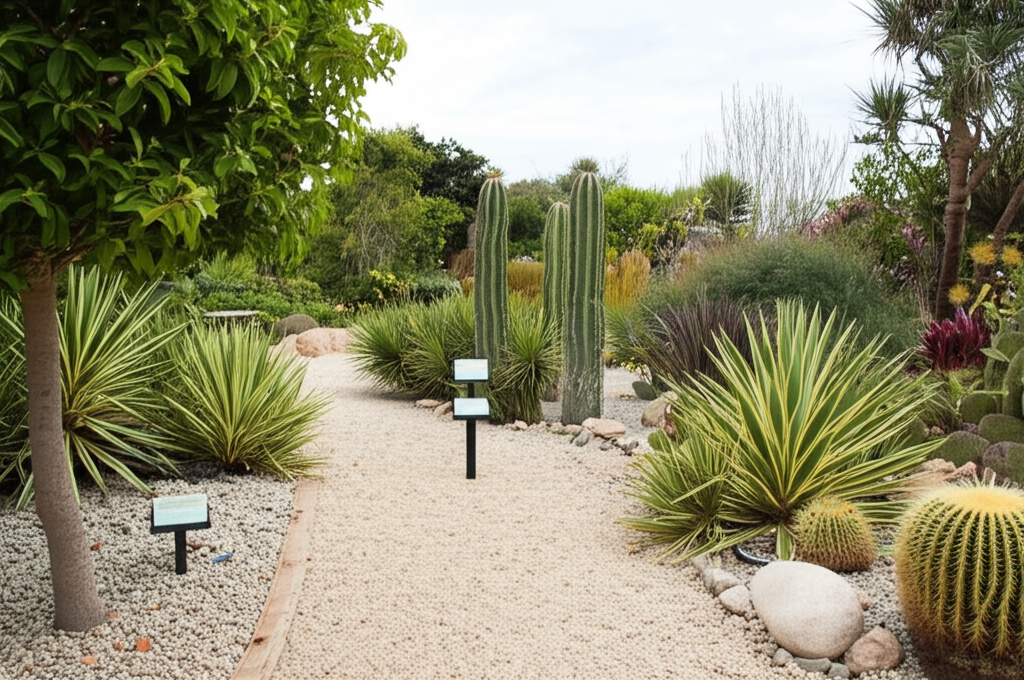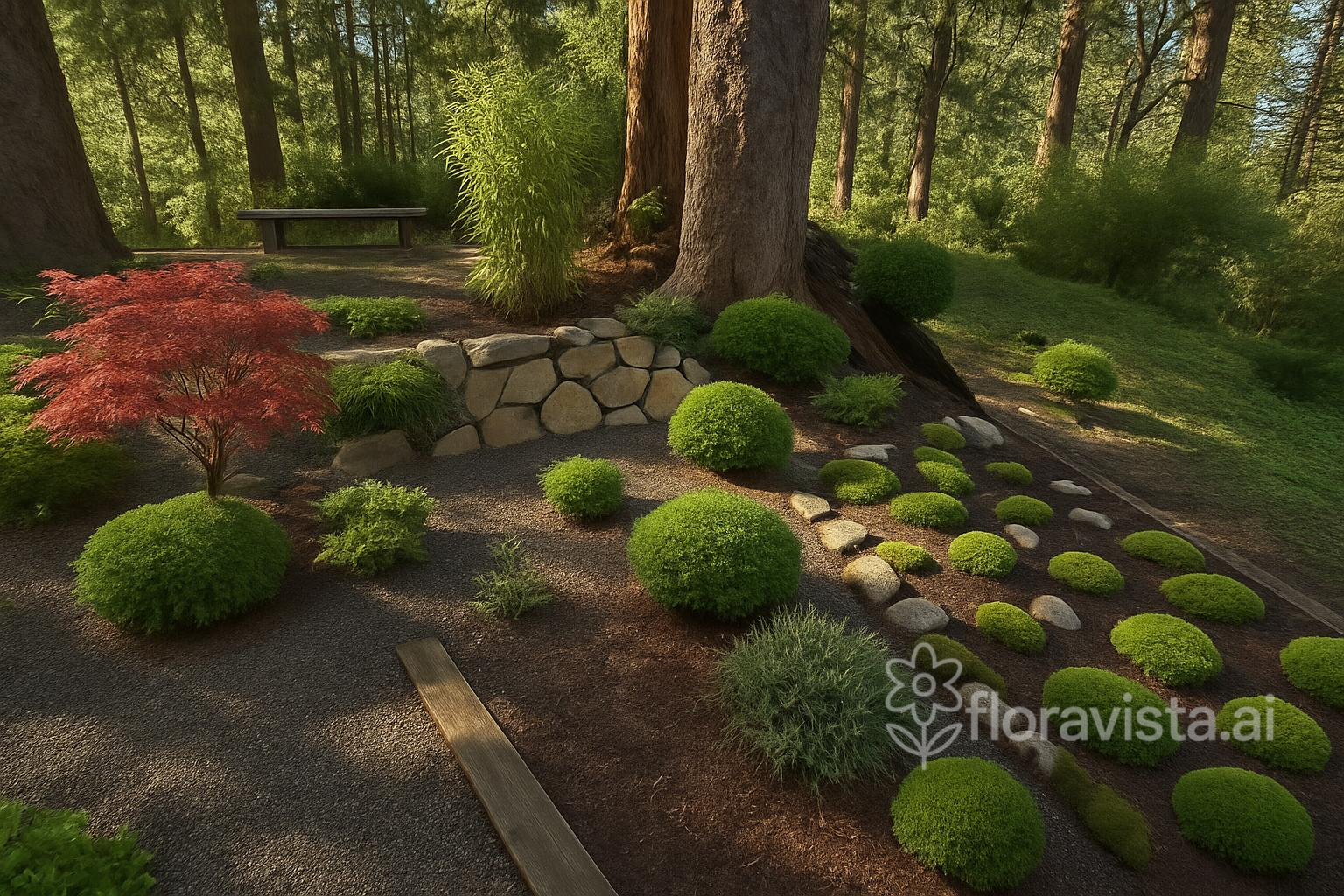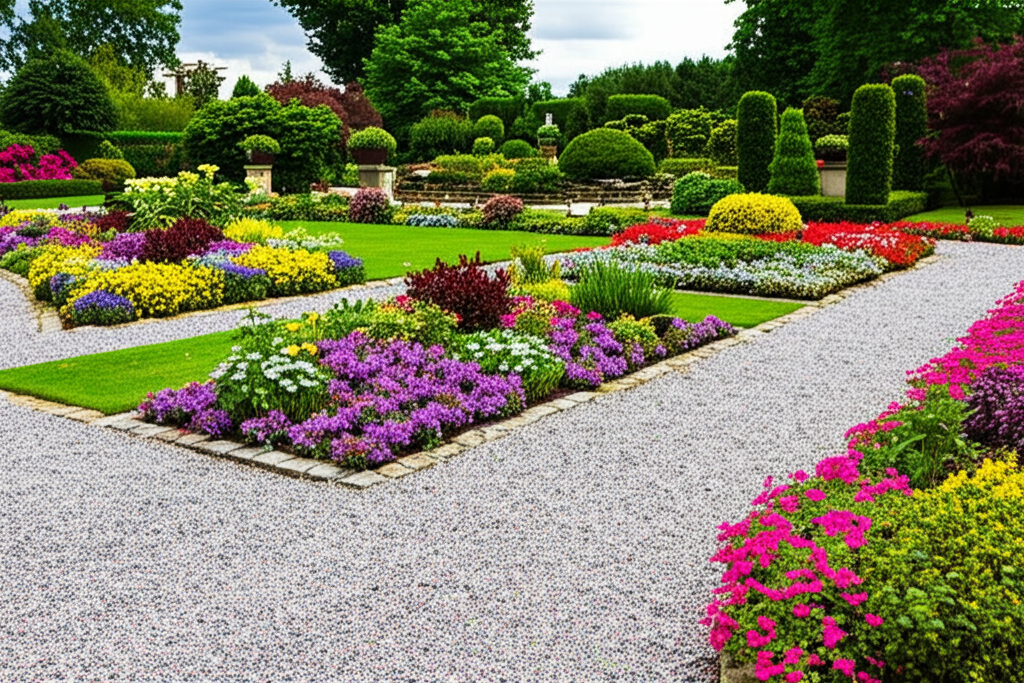How to Choose the Perfect Landscape Style for Your Climate Zone

Creating a beautiful landscape involves more than just selecting plants and features you find attractive. The most successful gardens are those designed with climate compatibility in mind—where the chosen style and plants naturally thrive in your local conditions with minimal intervention.
This guide will help you identify your climate zone and select a landscape style that will flourish in your region while reflecting your personal aesthetic.
Understanding Your Climate Zone: The Foundation of Smart Design
Climate zones categorize regions based on temperature ranges, precipitation patterns, and other environmental factors that affect plant growth. The most commonly used system in the United States is the USDA Hardiness Zone Map, which divides North America into 13 zones based on average annual minimum winter temperatures.
How to Identify Your Climate Zone
- USDA Hardiness Zone - Find your zone by entering your zip code on the USDA's interactive map or through various gardening websites.
- Sunset Climate Zones - For Western states, the Sunset system provides more detailed information that accounts for factors beyond just winter temperatures.
- Local Microclimates - Within broader zones, your property may have microclimates created by factors like:
- Elevation changes
- Proximity to bodies of water
- Urban heat islands
- Wind patterns
- Sun exposure
Beyond hardiness zones, consider these additional climate factors:
- Annual precipitation - Both amount and seasonal distribution
- Humidity levels - Some plants thrive in humid conditions while others prefer dry air
- Length of growing season - The frost-free period determines what can successfully complete its growth cycle
- Summer heat intensity - Extreme heat can stress plants even if they survive your winters
Popular Landscape Styles and Their Ideal Climate Matches
Let's explore various landscape styles and the climate conditions where they naturally thrive:
Mediterranean Style
Ideal Climate Conditions:
- Mild, wet winters and hot, dry summers
- USDA Zones 8-10
- Low humidity
- Moderate rainfall concentrated in winter months
Key Features:
- Drought-tolerant plants like lavender, rosemary, and olive trees
- Terracotta pots and warm-colored hardscaping
- Gravel pathways and courtyards
- Water features as focal points (used sparingly)
- Outdoor living spaces with pergolas and shade structures
Best Regions: California, parts of Oregon and Washington, Southwest regions with irrigation
English Cottage Garden
Ideal Climate Conditions:
- Moderate temperatures year-round
- USDA Zones 5-8
- Regular rainfall throughout the growing season
- Moderate humidity
Key Features:
- Abundant, seemingly casual plantings with a mix of perennials, roses, and flowering shrubs
- Informal layout with curving pathways
- Climbing plants on trellises and arbors
- Picket fences and rustic garden ornaments
- Dense, layered plantings with minimal exposed soil
Best Regions: Northeast, Pacific Northwest, Upper Midwest, and parts of the Mid-Atlantic
Japanese Zen Garden
Ideal Climate Conditions:
- Moderate to cool temperatures
- USDA Zones 5-9
- Regular rainfall or irrigation availability
- Moderate humidity
Key Features:
- Minimalist design with carefully placed elements
- Raked gravel or sand representing water
- Carefully pruned trees and shrubs (especially Japanese maples and conifers)
- Natural stone elements
- Simple water features
- Moss as groundcover in shadier areas
Best Regions: Pacific Northwest, Northeast, parts of the Mid-Atlantic and Upper Midwest
Desert/Xeriscape
Ideal Climate Conditions:
- Hot, dry summers and mild to cool winters
- USDA Zones 7-10
- Low annual rainfall
- Low humidity
- High sun exposure
Key Features:
- Drought-tolerant plants like cacti, succulents, and desert-adapted perennials
- Gravel, decomposed granite, or sand mulch
- Strategic shade structures
- Rainwater harvesting systems
- Limited turf areas or no lawn
- Earth-toned hardscaping that doesn't absorb excessive heat
Best Regions: Southwest, Southern California, parts of Texas and other arid regions
Tropical Paradise
Ideal Climate Conditions:
- Warm to hot year-round
- USDA Zones 9-11
- High humidity
- Abundant rainfall or irrigation
- No frost
Key Features:
- Lush, layered plantings with bold-leaved species
- Vibrant flowering plants
- Palm trees and other tropical specimens
- Water features
- Natural stone or wood elements
- Shade structures for heat protection
Best Regions: Florida, Hawaii, southern Texas, coastal Southern California with irrigation
Woodland/Native Garden
Ideal Climate Conditions:
- Varies widely as it's based on local native ecosystems
- All USDA Zones (using appropriate native plants)
Key Features:
- Plants native to your specific region
- Layered plantings mimicking natural ecosystems
- Informal, organic design
- Habitat elements for local wildlife
- Natural mulches like leaf litter
- Limited formal hardscaping
Best Regions: Any region, using plants native to your specific area
Adapting Your Preferred Style to Your Climate Reality
What if your preferred aesthetic doesn't naturally align with your climate? You have several options:
1. Embrace Climate-Appropriate Alternatives
Look for plants and materials that create a similar visual effect but are suited to your conditions. For example:
- If you love English cottage gardens but live in a hot, dry climate, create a "dry cottage garden" using drought-tolerant perennials with a similar informal planting style
- If you admire tropical gardens but experience frost, use cold-hardy plants with bold foliage and tropical-looking flowers that can survive your winters
2. Create Microclimate Modifications
Strategically modify your landscape to create more favorable conditions:
- Use buildings, walls, and fences to block harsh winds or create shade
- Install water features to increase humidity in dry areas
- Create raised beds with amended soil for plants with specific needs
- Use mulch to moderate soil temperature and retain moisture
3. Implement Zoned Landscaping
Divide your property into zones based on water and maintenance needs:
- Oasis Zone - Areas close to the house where you can justify higher water use and maintenance for your preferred aesthetic
- Transition Zone - Areas with moderate water use and more climate-adapted plants
- Outer Zone - Areas furthest from the house using primarily native and climate-adapted plants requiring minimal intervention
4. Focus on Hardscaping and Structural Elements
Capture the essence of your preferred style through non-plant elements:
- Mediterranean style can be evoked through terracotta pots, gravel, and appropriate hardscaping even if you can't grow olive trees
- Japanese garden aesthetics can be achieved through careful pruning of cold-hardy conifers and thoughtful stone placement
Climate-Adaptive Design Strategies for Any Style
Regardless of your chosen aesthetic, these principles will help create a more resilient landscape:
Water-Wise Design
- Group plants with similar water needs (hydrozoning)
- Install efficient irrigation systems with smart controllers
- Capture and utilize rainwater where possible
- Use appropriate mulch to retain soil moisture
- Minimize traditional lawn areas
Soil Health Management
- Improve soil structure with organic matter appropriate for your climate
- Use mulch that breaks down well in your conditions
- Consider mycorrhizal fungi inoculants to improve plant resilience
Strategic Plant Selection
- Choose plants that thrive with minimal intervention in your climate
- Include at least 50-70% native species
- Select disease-resistant varieties
- Consider future climate projections for your region
Climate-Specific Landscape Challenges and Solutions
Hot, Dry Climates
Challenges: Water scarcity, intense sun, heat stress on plants
Solutions:
- Shade structures and strategic tree placement
- Rainwater harvesting systems
- Greywater recycling where permitted
- Permeable hardscaping to maximize water infiltration
- Light-colored materials that reflect rather than absorb heat
Cold, Northern Climates
Challenges: Short growing season, harsh winters, snow management
Solutions:
- Windbreaks to protect from cold winter winds
- Cold frames and season extenders
- Plants with winter interest (berries, bark, structure)
- Hardscaping designed for snow removal and storage
- South-facing exposures for key garden areas
Humid, Rainy Climates
Challenges: Fungal diseases, excessive moisture, limited sun
Solutions:
- Proper plant spacing for air circulation
- Raised beds for improved drainage
- Disease-resistant plant varieties
- Rain gardens to manage stormwater
- Covered outdoor spaces for year-round enjoyment
Coastal Environments
Challenges: Salt spray, wind, sandy soils
Solutions:
- Salt-tolerant plant species
- Windbreaks and strategic plant placement
- Soil amendments to improve water retention
- Materials resistant to salt corrosion
- Stabilizing plantings for dunes and slopes
Using Technology to Find Your Perfect Style Match
Modern tools can help you visualize and plan a climate-appropriate landscape:
- FloraVista AI Design Tool - Our platform analyzes your location and climate data to suggest appropriate styles and plants
- Plant Database Apps - Filter plants by hardiness zone, water requirements, and other factors
- Local Extension Services - Many offer online resources specific to your region
- Climate-Focused Design Services - Professional designers with expertise in sustainable, climate-appropriate landscaping
Conclusion: Harmony Between Style and Climate
The most successful landscapes find the sweet spot where aesthetic preferences meet climate realities. By understanding your local conditions and making informed choices, you can create a beautiful outdoor space that thrives with minimal resources and intervention.
Remember that a truly sustainable landscape is one that works with, rather than against, your local climate. This approach not only creates a more resilient garden but also connects your space to its regional context in an authentic way.
Ready to find your perfect climate-appropriate landscape style? Try FloraVista's AI design tool to get personalized recommendations based on your location and preferences.


